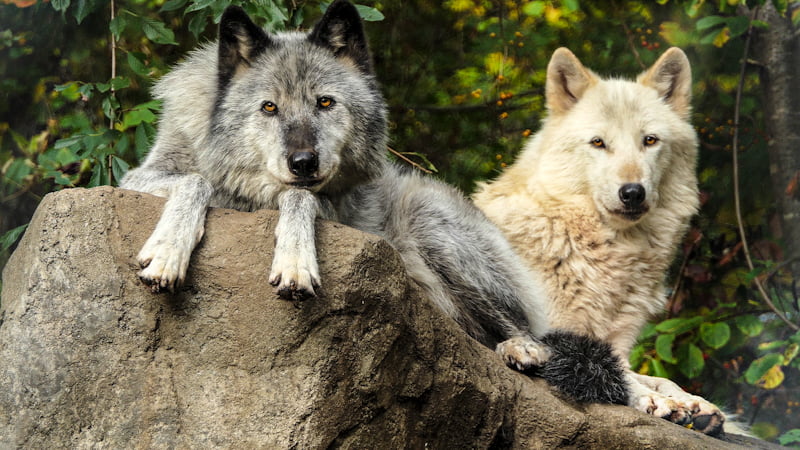

Howling with the Wolves of New York
New York’s Hudson Valley stretches deep into the region like a vast backyard, whether from our half-open fried concrete cities or the new normal on rural hybrid Main Street.
A healthy dose of easy-to-access, but well-earned escape in a cautiously optimistic post-pandemic time was just the thing to lift our longing adventurous spirits.
Great Wide Open in NY State
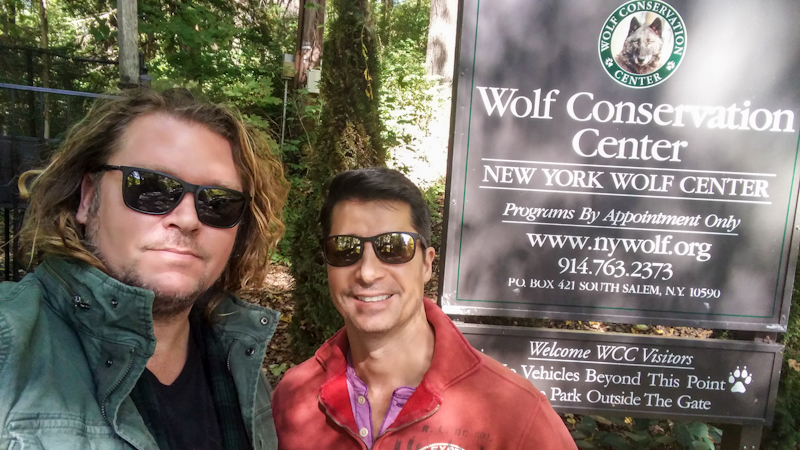

Mother Nature is open to making nice again in the great wide open here. While not completely out of the woods, we’re at least out of the rabbit hole, and we need to get out of our heads.
To the Wolves
Breathing the fresh air along the lush remote nature leading to the Wolf Conservation Center in South Salem New York provided a sense of refreshing freedom.
Ah, the simple joys of a road trip. Like a lone wolf at the gate these past few months in quarantine, my hunger for adventure, nature, and fulfillment as a learner and born explorer had been heeled and deprived so long.
When will the Wolves Howl?
Hiking up the hilly driveway to the visitor’s center from the guest lot after about an hour plus from New York City, we wondered when the howling would begin. Ushered by a facility volunteer into a fragrant and fresh wood cabin where fairy lights hung from the beams and colorful Native American crafts were displayed, my friend, Steve, and I found ourselves immersed in a lively education all about wolves and their importance to healthy ecosystems.
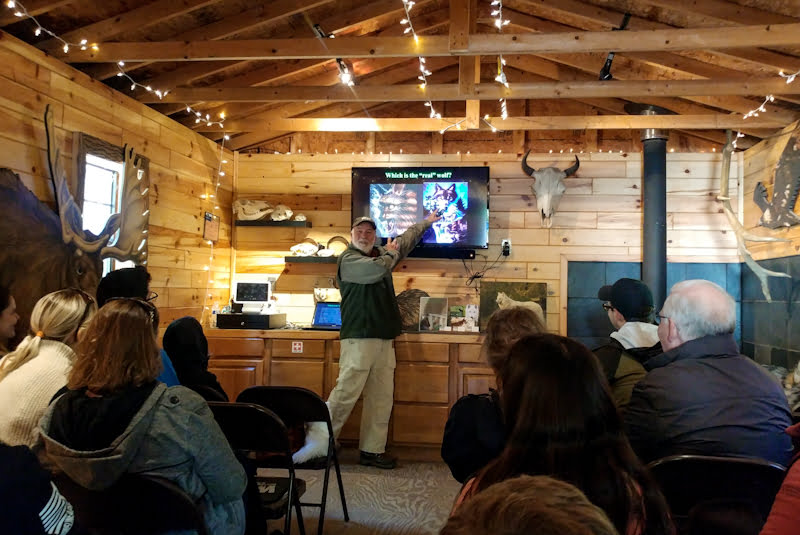

Our seasoned guide, Joe Darling, stood at the helm before us with a monitor of visuals illuminating facts and figures that fascinated and intrigued us.
For instance, unlike dogs, wolves actually do see red and yellow hues.
And I didn’t know there are just three places on the map where wolves are not indigenous; Australia, Antarctica, South America. In North America, we have the highly endangered Red Wolf species and the Mexican Grey Wolf who, in actuality, has coats of varying colors.
“Did you know that there were once about 350,000 wolves in the states until 400 years ago?” Darling asked.
It only took one guess when he then asked us what the destructive factor was in their fate, “Human colonization!”
Ding, ding, ding!
Little Red Riding Hood Lied
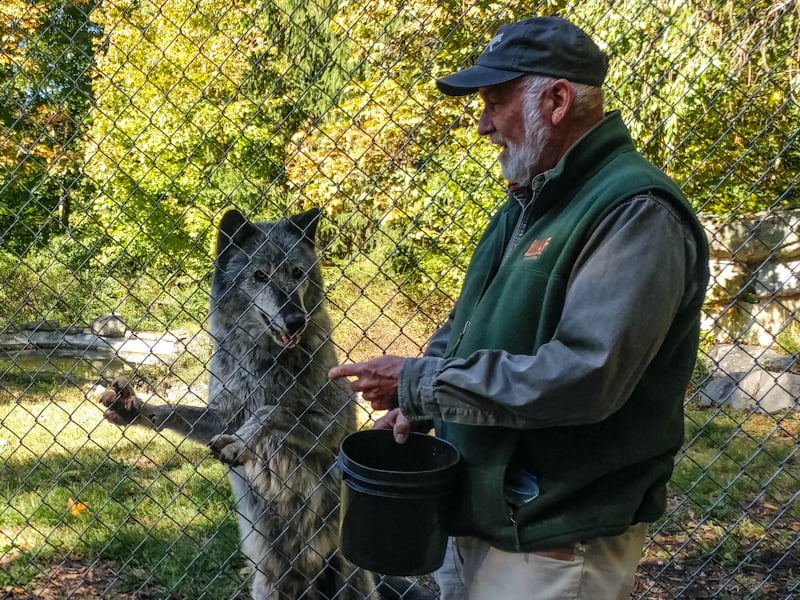

“Since 1893 these falsely maligned creatures have been eliminated from this particular area of this conservation center, one of a few that exists around North America,” Darling revealed.
“People are afraid of wolves but it’s all based on folklore because the truth is that wolves are afraid of people! When wolves see people, they run away instinctively. Chipmunks bite more people per year than wolves!”
Fables like Little Red Riding Hood, which has been around for centuries mislead people into believing the myth that wolves hunt people. Humans are not natural prey for these social packs of canids. The truth is that the demonizing of wolves has led to their demise and highly critical endangerment.
Fishers and ranchers often mistakenly blame the wolves for casualties in their stock. Darling continued to explain that there has been restricted land designated by the U.S. Congress set aside for the wolves. But when the delicate balance of nature is upset (again, by humans), perhaps all bets are off.
Shepherding the Packs
As Darling walked us through the woody paths to the den of Ambassadors, he beckoned us to howl into the skies to hear the packs respond. Alas, there was no answer.
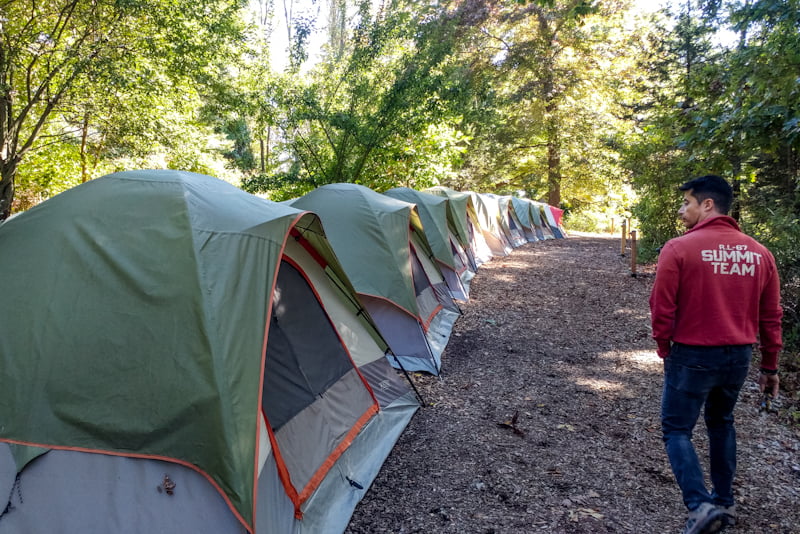

But my howling was still impressive. They were holding out. It was lunchtime, and they’re no fools.
WCC’s three Ambassador Wolves help provide an understanding of the animal’s nature for visitors. The current title holders are siblings Alawa and Zephyr, and younger mate, Nikai.
They are normally able to be seen around the world on their live webcams, but can also be seen remotely on the site’s video library at any time. Want to hear the chilling sound of the facility’s 42 wolves howling?
The facility oversees a number of dens with their respective packs, all intensely secured by wire fences inside a natural forest area complete with natural habitat sleeping quarters. It was clear that they are careful to not take the wolf out of the wolf.
“When the Mexican Grey Wolves dwindled to just seven, we captured them and brought them back to recover at a place like this. We help ensure their breeding and protections essentially, and release them in packs. They grow fast! Now 135, they are doing quite well, with tracking collars, and legally protected. It’s important to keep wolves afraid of people,” Darling explained.
Stewardship of the Wolves
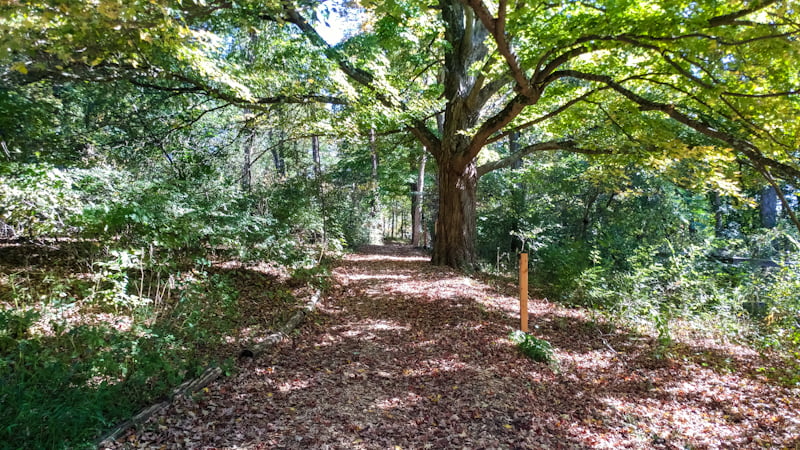

The mission of the not-for-profit Wolf Conservation Center which was founded by Hélène Grimaud in 1999, is as an environmental education organization working to “protect and preserve wolves in North America through science-based education, advocacy, and participation in the federal recovery and release programs for the two critically endangered wolf species” mentioned above.
Through wolves, WWC teaches the “broader message of conservation, ecological balance, and personal responsibility for improved human stewardship.”
The many programs, events, and advocate involvement offered by the center include the Adopt a Wolf program, Sleeping with the Wolves, and Run like a Wolf challenge.
The current on-site programs are by appointment only at this time of publishing.

